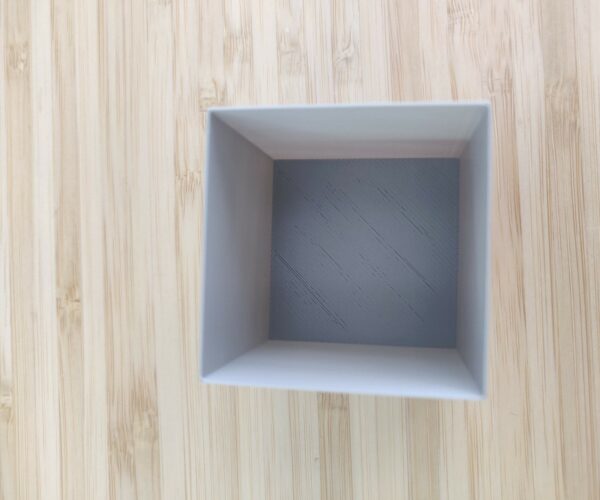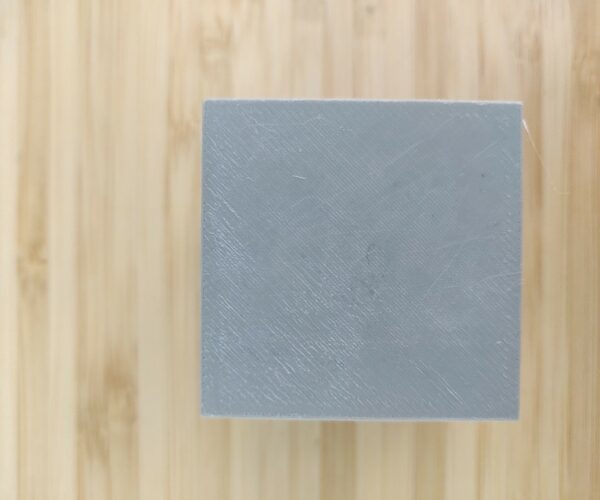After switching out my hotend, I'm now having issues with my second layer.
I have a Prusa Mk3. I recently switched out the entire assembled hotend. I am now having some issues with printing.
Here is a quick test print as an example.
First layer:
What the top layer looks like (this is after about 3 or 4 layers I believe):
This is happening for all models. It's like as soon as it hits the second layer, some parts of the filament aren't just sticking to the first layer.
This is happening also with g-code files that I have successfully printed with my previous hotend with no issues at all.
Could I get some help with this?
Printer: Prusa Mk3
Slicer: Prusa Slicer
Filament: Overture PETG
Print temp: 235
RE: After switching out my hotend, I'm now having issues with my second layer.
My guess would be that filament isn't supplied fast enough.
I assume the print speed for the wall is much slower than that last bottom layer?
RE: After switching out my hotend, I'm now having issues with my second layer.
My guess would be that filament isn't supplied fast enough.
I assume the print speed for the wall is much slower than that last bottom layer?
But this doesn't explain why it would work before the hotend replacement. I've tried using the same gcode files that I have printed correctly with no issues from before the hotend replacement.
RE: After switching out my hotend, I'm now having issues with my second layer.
Did you recalibrate PID for the new hotend thermistor? PETG likes making crumbs and can degrade with moisture. Just thinking of things that can change over time.
and miscellaneous other tech projects
He is intelligent, but not experienced. His pattern indicates two dimensional thinking. -- Spock in Star Trek: The Wrath of Khan
RE: After switching out my hotend, I'm now having issues with my second layer.
Did you recalibrate PID for the new hotend thermistor? PETG likes making crumbs and can degrade with moisture. Just thinking of things that can change over time.
I have not. I did watch my temperature graphs though during the print and they were consistently where they were set to.
Would a PID calibration be necessary in that case?
RE: After switching out my hotend, I'm now having issues with my second layer.
@jeremy-r5
<<But this doesn't explain why it would work before the hotend replacement>>
True, but simultaneous events are not necessarily connected.
I would try a printing test at reduced speed (50%) and see if filament placement improves?
RE: After switching out my hotend, I'm now having issues with my second layer.
Did you recalibrate PID for the new hotend thermistor? PETG likes making crumbs and can degrade with moisture. Just thinking of things that can change over time.
I have not. I did watch my temperature graphs though during the print and they were consistently where they were set to.
Would a PID calibration be necessary in that case?
It's recommended for any hardware changes such as hotend replacement. I'd put it in the "should be done" category, do it, then see if it helps. I'd also try another filament, whether PETG or another material, to make sure the problem is really with the printer and not just filament characteristics. Again, filament can absorb moisture which will impact quality.
I'd also try some smaller prints to help pinpoint the issue more quickly. That under-extrusion on the 2nd layer may indicate you need a bump more heat for the filament, or you might just have a partial clog. Raise Z to max, heat up the nozzle to print temps and examine the filament flow as you extrude a length of filament. Does the filament flow evenly and coil loosely under the nozzle, or does it come out irregularly or at an angle once the flow starts?
and miscellaneous other tech projects
He is intelligent, but not experienced. His pattern indicates two dimensional thinking. -- Spock in Star Trek: The Wrath of Khan
RE: After switching out my hotend, I'm now having issues with my second layer.
Did you recalibrate PID for the new hotend thermistor? PETG likes making crumbs and can degrade with moisture. Just thinking of things that can change over time.
I have not. I did watch my temperature graphs though during the print and they were consistently where they were set to.
Would a PID calibration be necessary in that case?
It's recommended for any hardware changes such as hotend replacement. I'd put it in the "should be done" category, do it, then see if it helps. I'd also try another filament, whether PETG or another material, to make sure the problem is really with the printer and not just filament characteristics. Again, filament can absorb moisture which will impact quality.
I'd also try some smaller prints to help pinpoint the issue more quickly. That under-extrusion on the 2nd layer may indicate you need a bump more heat for the filament, or you might just have a partial clog. Raise Z to max, heat up the nozzle to print temps and examine the filament flow as you extrude a length of filament. Does the filament flow evenly and coil loosely under the nozzle, or does it come out irregularly or at an angle once the flow starts?
I tried with a roll of PLA filament. I'm getting similar results.
 Same looking under extrusion on top layers.
Same looking under extrusion on top layers.
This PLA print was printed at 225 degrees. I printed it a bit hotter than what I typically do PLA at. It doesn't seem to be a temperature issue.
When I raise the extruder and load filament, it looks like it comes through pretty evenly.
RE: After switching out my hotend, I'm now having issues with my second layer.
Petg is standard, first layer 240 and de rest of layers 250.(and you can try with a higher temp 260).
Do you have enough tension on the 2 springs of the extruder?


